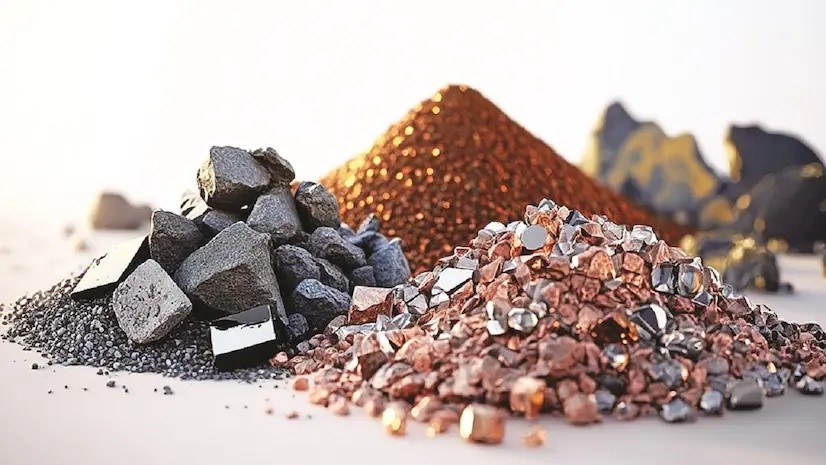





Copyright infringement not intended
Picture Courtesy:https://www.business-standard.com/industry/news/cabinet-approves-royalty-rates-for-mining-of-12-critical-minerals-124030100028_1.html
Context: The Critical Minerals Summit organized by the Ministry of Mines addressed key challenges and opportunities in the beneficiation and processing of critical minerals (CRMs) essential for various technologies, including renewable energy systems and electric vehicles.
Details
Key Highlights of the Summit
Conclusion
Must Read Articles:
Source:
|
PRACTICE QUESTION Q. Consider the following statements regarding Critical Minerals: 1. Critical Minerals are always rare and have limited natural occurrence. 2. Critical Minerals are essential for the production of renewable energy technologies. 3. Recycling critical minerals is not feasible due to their complex composition. 4. Critical Minerals are exclusively mined from deep-sea mining operations. How many of the above statements are correct? A) Only one B) Only two C) Only three D) All four Answer: A Explanation: Statement 1 (Incorrect): Critical minerals are not defined solely by their rarity or limited natural occurrence. They are identified based on their strategic importance to industries and national security. While some critical minerals may be relatively rare, others might be more abundant but still play crucial roles in key technologies. Criticality is assessed based on factors like economic value, supply chain dependency, and geopolitical risks. Statement 2 (Correct): Critical minerals are essential for renewable energy technologies like solar panels, wind turbines, and electric vehicle batteries. Rare earth elements (e.g., neodymium, dysprosium) are critical for making magnets in wind turbines and electric motors. Minerals like lithium, cobalt, and graphite are vital for lithium-ion batteries used in electric vehicles and energy storage. Statement 3 (Incorrect): Recycling of critical minerals is feasible and necessary for sustainable resource management. Many critical minerals can be recovered from end-of-life products like electronics and batteries. Recycling conserves resources, reduces environmental impacts, and mitigates supply chain risks. Advances in recycling technologies improve the efficiency of extracting critical minerals. Statement 4 (Incorrect): Critical minerals are sourced from various mining operations, including terrestrial mining (open-pit, underground) and seabed mining. Deep-sea mining is a potential frontier for certain minerals, but most critical minerals are currently extracted from terrestrial deposits due to existing infrastructure and accessibility. |






© 2025 iasgyan. All right reserved